They're a 'scientific marvel': World's first in vitro cheetah cubs born at Ohio zoo
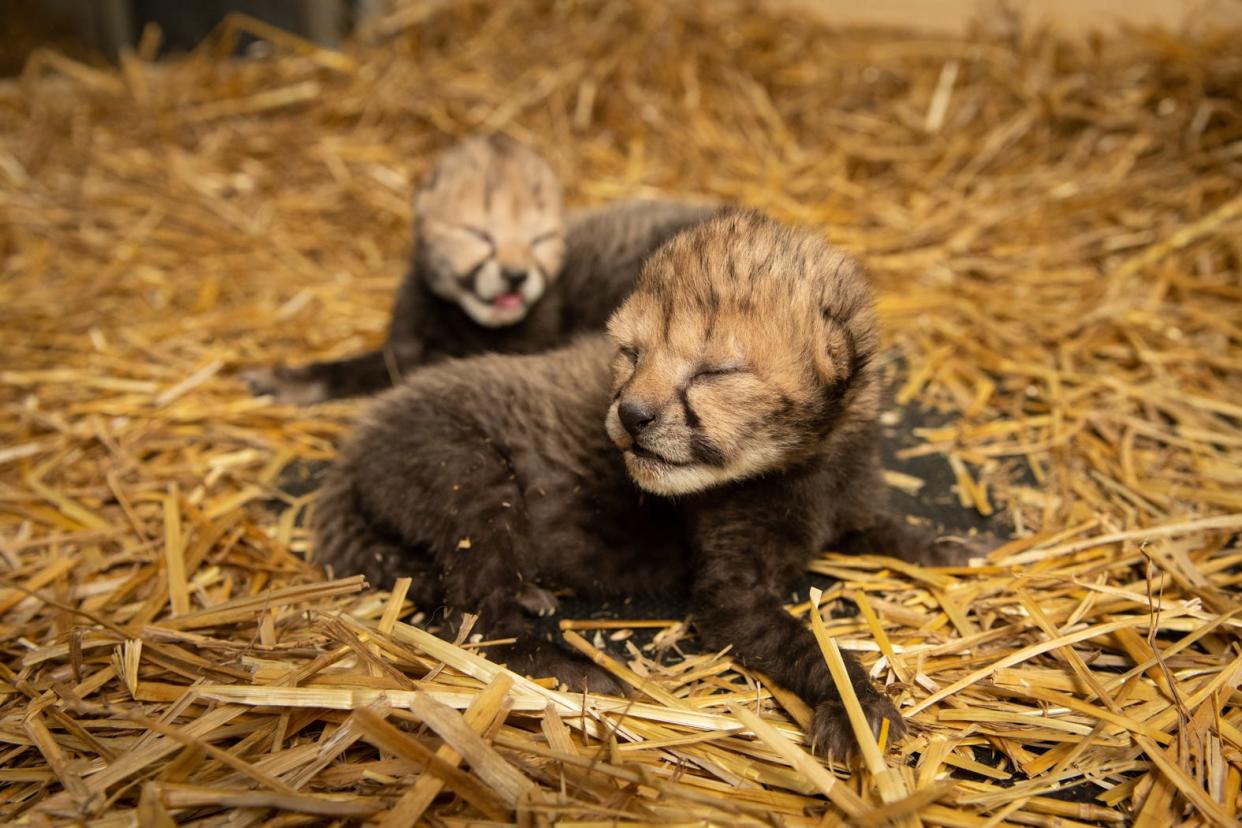
COLUMBUS, Ohio – The first cheetah cubs ever conceived through in vitro fertilization have entered the world, marking a breakthrough for zoo breeding programs – a feat achieved at the Columbus Zoo and Aquarium in Ohio.
The zoo announced the birth early Monday. The two cubs, a male and a female, were born Wednesday night to 3-year-old, first-time mother Isabelle, who keepers call “Izzy.” They’re healthy and bonding together in a den located in a behind-the-scenes area of the zoo.
Keepers continue to monitor them with a remote camera. They have been observed nursing.
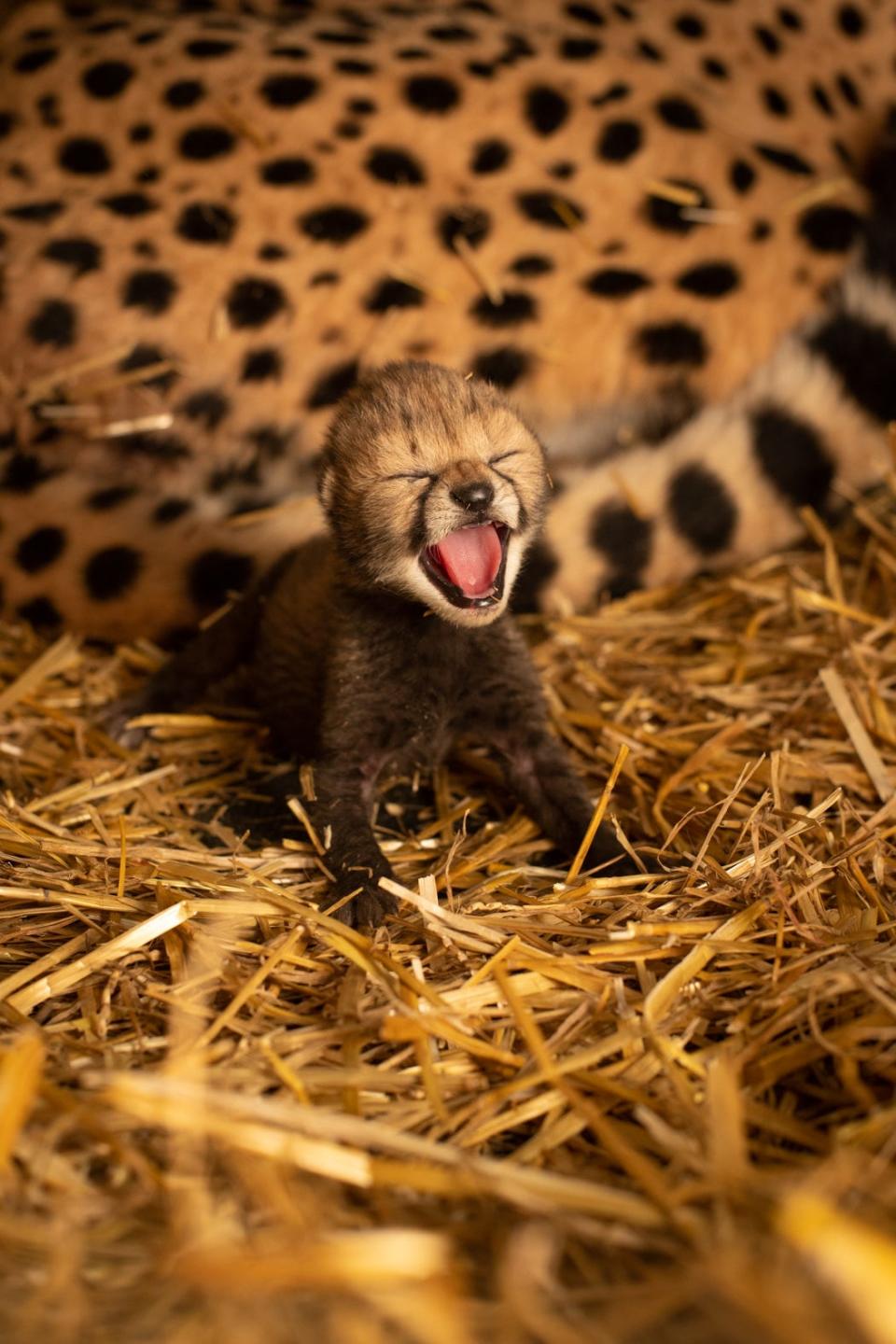
“These two cubs may be tiny, but they represent a huge accomplishment, with expert biologists and zoologists working together to create this scientific marvel,” said Dr. Randy Junge, the Columbus Zoo’s vice president of animal health. “This achievement expands scientific knowledge of cheetah reproduction, and may become an important part of the species’ population management in the future.”
This was just the third time scientists had ever attempted a cheetah embryo transfer.
The zoo, with partners, decided to use the technique to expand the gene pool of cheetahs in human care. The cubs are not Izzy’s biological offspring, but instead were conceived using eggs and sperm collected from other cheetahs with more valuable DNA.
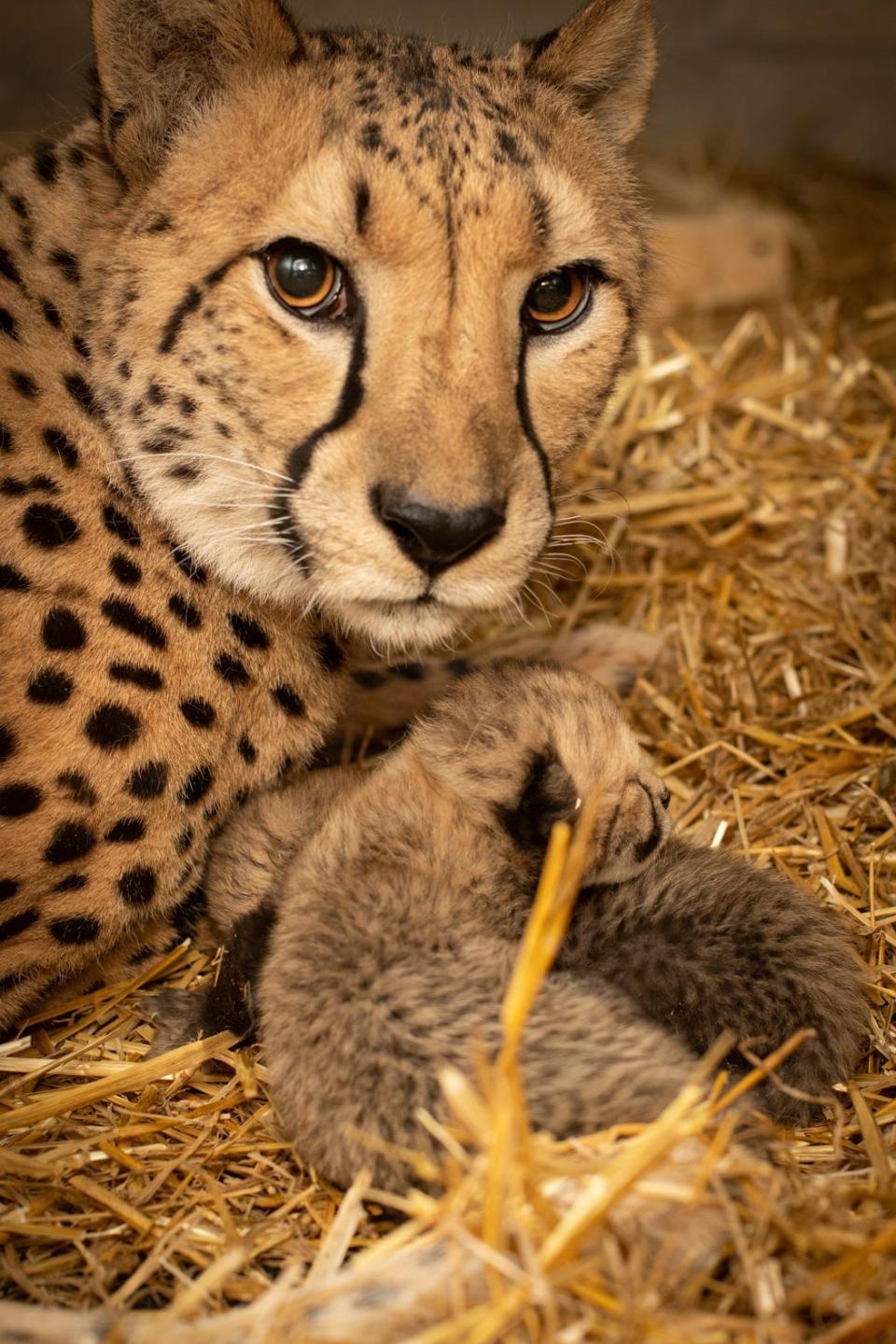
The biological mother of the cubs is 6 1/2-year-old Kibibi, a Columbus Zoo cheetah that has never reproduced and is too old to easily become naturally pregnant.
Izzy, young enough to breed, has genes that are already well-represented in the captive cheetah population.
The cubs’ father is 3-year-old Slash at Fossil Rim Wildlife Center, another accredited facility near Glen Rose, Texas.
Biologists from the Smithsonian Conservation Biology Institute in Front Royal, Virginia, which leads wildlife research projects worldwide, fertilized the eggs outside the womb in a laboratory. They incubated them and created embryos, which they implanted into both Izzy and her sister, 3-year-old Ophelia, in November.
Dr. Adrienne Crosier, a cheetah biologist and Dr. Pierre Comizzoli, a research biologist, both from the biology institute, performed the procedure, along with the Columbus Zoo’s veterinary team.
On Dec. 23, an ultrasound confirmed Izzy was pregnant. Ophelia did not become pregnant.
A cheetah’s pregnancy typically lasts about three months. They’re known for being the fastest animals on land, capable of running 65 mph to 75 mph in short bursts.
As of Friday, the male cub weighed about 1 pound and the female weighed 0.75 pounds . Full-grown, they’ll weigh 80 to 145 pounds.
It’s not yet known when the cubs will be in a public exhibit. The zoo’s 17 cheetahs reside in its Heart of Africa region, which is closed until it’s warm outside, usually in May.
The Columbus Zoo is a member of the Association of Zoos and Aquariums, a nonprofit group of more than 230 accredited institutions in the U.S. and abroad. Association members use a planning process called Species Survival Plans to guide its breeding programs, meticulously tracking the genetic history of their animals and recommending the best breeding pairs.
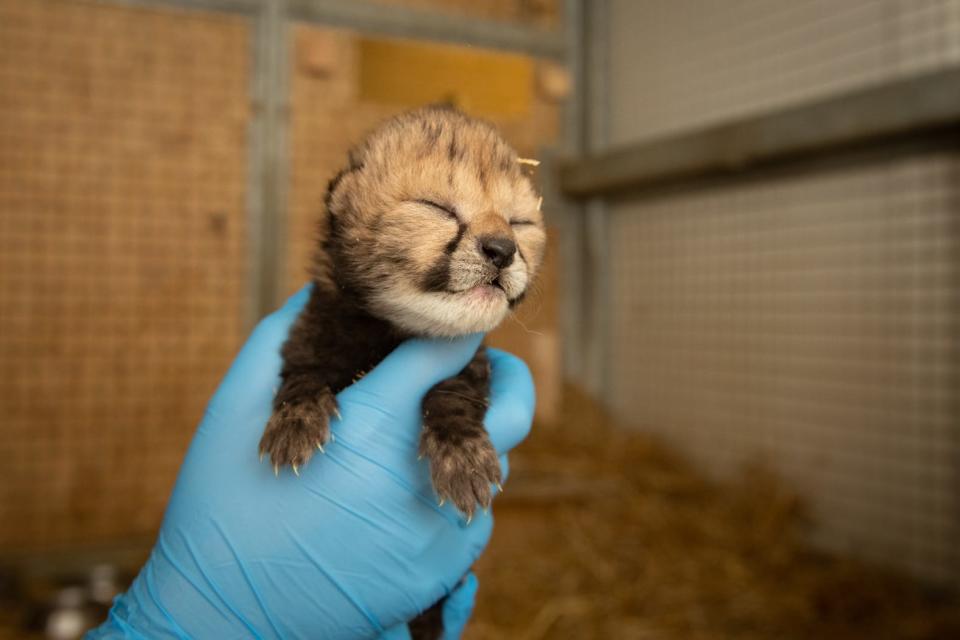
Ultimately, the goal is to maintain genetic diversity, which keeps offspring healthy. The plans also reduce the need to enhance family trees with genes from wild animals.
Izzy, Ophelia and Kibibi are three of the zoo’s “ambassador cheetahs,” which typically arrive at the zoo to be raised by hand when their mothers are unable to care for them, said Suzi Rapp, its vice president of animal programs. As a result, they’re accustomed to humans and have formed close bonds with their keepers. The cheetahs are trained to voluntarily allow ultrasounds, X-rays, blood draws and other medical procedures, so the risks of anesthesia often can be avoided.
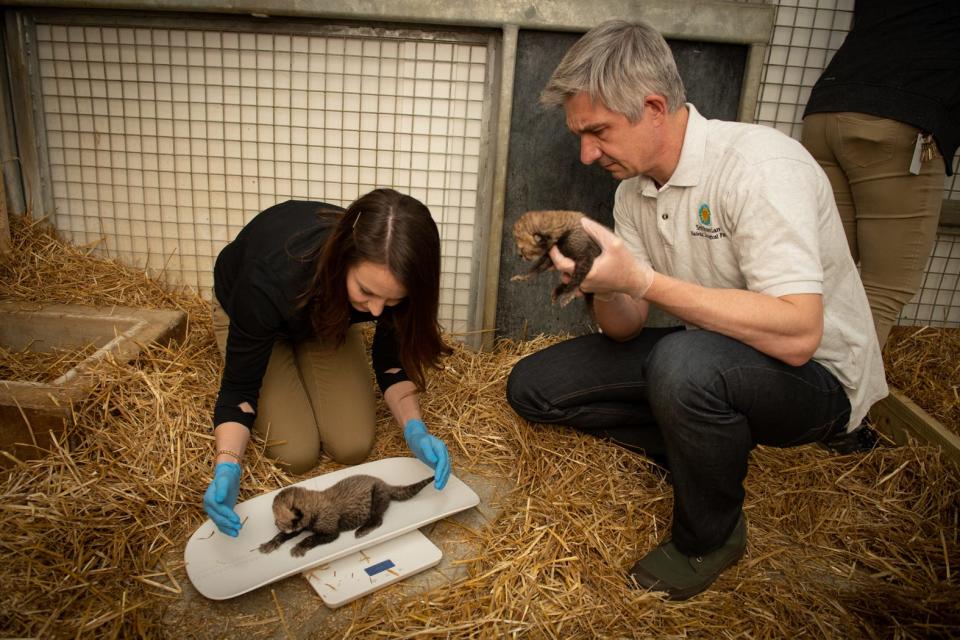
It’s common for zoos to explore assisted reproductive technologies, such as artificial insemination and in vitro fertilization, for many species, especially those that have limited numbers or struggle to breed naturally.
Despite aging, the eggs and hormones of cheetahs older than 8 appear to stay in good condition, unlike other mammals, according to a 2011 study from the Smithsonian Conservation Biology Institute. Their bodies, however, commonly develop various complications that can affect pregnancy, such as abnormal cell growth, infections and cysts in their uterine tracts.
The study predicted the findings would result in breakthroughs with cheetah in vitro fertilization, but until now, the efforts had no success.
Other large cats, such as lions and tigers, have also struggled with the procedure. One birth of in vitro tigers was reported in 1990.
In 2011, approximately 80% of adult female cheetahs in North American institutions had never reproduced, according to the study. The death rate for cheetahs had exceeded the birth rate in 13 of the previous 16 years.
Attempts to artificially inseminate cheetahs are also typically not successful procedures, with the most recent one occurring in 2003.
Today, the species is considered vulnerable, with only about 7,500 animals left in the wild, according to the International Union for the Conservation of Nature.
Cheetahs now inhabit just 10% of their historic ranges of Africa, due to habitat loss and face other threats such as conflict with livestock and farmers and unregulated tourism. This geographic separation has left the species genetically “bottlenecked,” creating the potential for inbreeding.
The successful birth in Columbus offers the potential to help ensure the survival of cheetahs in their native range.
“With experience, we may be able to freeze embryos and transfer them to Africa,” said Dr. Randy Junge, the Columbus Zoo’s vice president of animal health.
Follow reporter Alissa Widman Neese on Twitter: @AlissaWidman
Report: Climate change could be a 'catastrophic' national security threat
Video: Golden retriever adorably attacked by a litter of puppies
This article originally appeared on The Columbus Dispatch: In vitro cheetah cubs are world's first, born at Columbus Zoo

